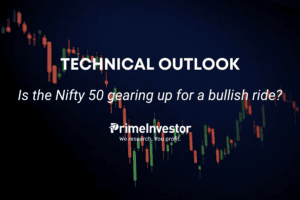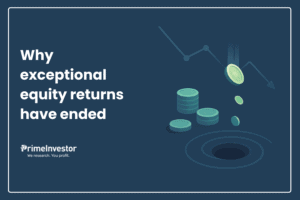It appears to be ETF season now with many AMCs lining up or launching ETFs. ICICI Pru AMC’s new ETF launch aims to mirror the Nifty Alpha Low Vol 30 index.
This multi-factor index combines the long-term benefits of containing downsides (through low volatility factor) along with higher returns (through high-alpha stocks). The index beats the key Nifty 100 index with high consistency, as well as other factor indices. While it is possible that some active funds may follow such a strategy in their internal process, this index is unique for being passive and seeking to deliver superior risk-adjusted returns.
Here’s more on the index and how its returns compare with other investment options. Please note that wherever we have talked about index returns, it is the TRI index.
What the Nifty Alpha Low Vol 30 index is about

The Nifty Alpha Low Vol 30 index is a multi-factor index. That means instead of being market cap driven, it sets factors (call them rules) to pick stocks. Among the various Nifty strategy indices are the single-factor indices – quality, value, low volatility, alpha, and beta. Then there are the multi-factor indices which combine two or more of these single-factor models (excluding beta).
These factors are applied on a parent index (like the Nifty 100, the Nifty 200, the Nifty Midcap 150 etc) and the stocks that score on the factor form the index. Stock weights are decided by the factor, and not the market capitalisation.
The Nifty Alpha Low Vol 30 (Nifty Alpha Low Vol) combines alpha and low volatility. The index methodology is as follows:
- Stocks from the Nifty 100 and the Nifty Midcap 50 form the eligible universe to calculate the index. The index is made up of 30 stocks.
- Alpha is measured using by the Jensen’s alpha formula, using the Nifty 50 as the market return. Low volatility looks at the deviation in stock price returns. Both factors consider a 1-year period to calculate scores.
- There is equal weight to alpha and low volatility factors. The top 30 stocks on the combined score form part of the index. The stock’s weight is decided by its score, with individual weights capped at 5%.
- Rebalancing the index is done in June and December.
Though it picks from both the large-cap and mid-cap indices, the Nifty Alpha Low Vol 30 is primarily large-cap based. Of the 30 stocks currently in the index, 26 are from the Nifty 100. Going by the latest available factsheet, the top 10 stocks and the sectors in the Nifty Alpha Low Vol are as below.
Where the returns come from
The Nifty Alpha Low Vol 30 blends the benefits of low volatility while still going after higher returning stocks. Over the longer term, low volatility as a strategy works very well as the better downside containment pushes up returns. Read more about low volatility index in our coverage on it here. Consider the single-factor indices, and the range of their return below:
As you can see, the Low Vol manages well on downsides, while the High Beta and the Alpha do well on gains. The movement of these indices over the years also point to the Low Vol index pushing ahead of the other single-factor indices. Therefore, putting the Low Vol and Alpha appears to work well.
The combination works as follows:
- One, the index scores very well on containing downsides thanks to low volatility. Based on 1-month rolling returns over the past decade, the Nifty Alpha Low Vol 30 captures just 56% of the Nifty 100’s downside on an average. The bulk of the index comes from the Nifty 100. The Nifty Low Vol’s capture ratio comes in at 69%. Extending this period out to 6 months and 1 year also shows similar trends.
- Two, the alpha factor helps push returns during market upswings as it latches on to momentum. The pure Low Vol index does not have this in its favour, as can be seen from the table above. The Nifty Alpha Low Vol 30, therefore, beats the Low Vol by a slim margin. On upside capture, over 1-year periods, the Alpha Low Vol captures 138% of the Nifty 100’s 1-year gains on an average against the 110% of the Low Vol.
- Three, the index is less volatile. Deviation in returns in different periods is on par with the Low Vol index itself and much lower than the broader, market-cap based indices.
How do returns compare
So if the Nifty Alpha Low Vol 30 is now an investment option, what can it be compared to? One, the single-factor indices available in the form of ETFs – low volatility, quality, and value. Then there are the broader market indices – the Nifty 100 and the Nifty LargeMid 250, since the index combines large-caps and mid-caps.
Against all these, the Nifty Alpha Low Vol 30 comes out on top. The index is able to beat the comparable indices with a high degree of consistency in the 1-year and 3-year periods. Based on the 3-year rolling returns since 2014 – we chose this because it covers a variety of market cycles – the Alpha Low Vol index:
- Beats the Nifty LargeMid 250 and the Nifty 100 all the time.
- Its average returns are ahead of even the top-notch Nifty Next 50. In shorter timeframes of 1-year, however, the Alpha Low Vol is less consistent.
- Beats the Nifty 100 Quality 30 all the time.
- It’s slightly less consistent against the Nifty 50 Value 20. But the Value 20 index picks only from the Nifty 50, making it a far narrower and therefore less comparable an index.
- On a 1-year basis, the Alpha Low Vol and Low Vol are almost equally matched in this timeframe. But over 3 year periods, and stretching the timeframe further back to cover more market cycles, the Alpha Low Vol index comes out ahead about 78% of the time.
Now, consider equity funds. Comparable categories include both the multi-cap funds and the large-and-midcap funds. These categories have a mix of strategies, from growth, to value, to blended, to focused.
On this count, the index is able to beat a majority of the funds in both categories across timeframes. In the large-and-midcap category, for example, just about 1 in 5 funds delivers returns better than the Alpha Low Vol with any degree of consistency in the 1-year period. Even fewer manage it on a longer 3-year basis. The same trend holds with multi-cap funds as well.
Do note that the index has been run real-time only from 2017 onwards, though the index levels have been calculated and provided from 2005. Further, the index uses only the 1-year history to run the scores. To this extent, it does lean into short-term market mood.
ETF factors
The Nifty Alpha Low Vol 30 appears to hold potential to boost a portfolio’s return. However, we need to watch ICICI Pru ETF on this index to see how it scores well on average turnover and tracking error. These factors will determine whether you can invest in the ETF.
Per its documentation, the ETF will aim to cap annual deviation at 2%, but this in the higher end and is not guaranteed.
Using volumes of other ETFs as an indicator is inconclusive as there’s a wide differential both between AMCs and within an AMC. For instance, ICICI Pru’s Low Vol ETF has clocked average daily traded value of Rs 67.65 lakh since January this year while its NV20 ETF averaged about a tenth of that. SBI’s Nifty 100 Quality 30 ETF averaged Rs 4.4 lakh.
Given the Nifty Alpha Low Vol’s promise, we will be watching volumes and returns to see how they play out, besides how to use it in a long-term portfolio. For this reason we do not have an opinion on the ETF at this juncture (so please don’t write to us to double-check😊). For ETFs that pass our volume and return filters, refer to Prime ETF.
The NFO of ICICI Pru Nifty Alpha Low Vol 30 is open until August 10th. You will need a demat account if you wish to invest in it.







31 thoughts on “Prime Reviews: ICICI Pru Alpha Low Vol 30 ETF NFO – a winning multi-factor combo?”
So how is the performance of this fund now???
We will try to review it at a later date. At present, it has lagged the long bull run, given its low vol tilt. Vidya
Excellent article once again.My annual vacation(which permits me to scour this site in depth) and the zest for adding a “suitable” low volatility kicker fund ends with this fof.Now all i need are the volumes to pick up and your buy reco. 🙂
Jokes apart this was once again well written
Thank you
What is the difference between the following:
ICICI Prudential Alpha Low Vol 30 ETF
ICICI Prudential Nifty Low Vol 30 ETF
You can read about both here: https://www.primeinvestor.in/a-passive-option-to-beat-other-strategies/
https://www.primeinvestor.in/etf-nifty-alpha-low-vol-30-nfo-winning-index/
Quick question – FOF NFO is offer for ICICI Prudential Alpha Low Vol 30 ETF FOF, do you recommend buying into ETF or FOF ?
At this point ETF has lower volume…so FoF may be easier to enter/exit. Vidya
Now that icici is launching fof of alpha low volatility index, do you think this can be a better replacement of low volatility index in a portfolio?
We don’t yet have a recommendation on this index in portfolios. If we do, we’ll include it in our recommendations list, and explain how it can be used in portfolios – thanks, Bhavana
Nippon India is also coming up with an index fund on Nifty Alpha Low Volatality 30 Index. Will this be a better option over ICICI ETF FOF considering expense, tracking error and volume ?
we have to see the tracking error and cost after it is launched sir 🙂 thanks, Vidya
Comments are closed.